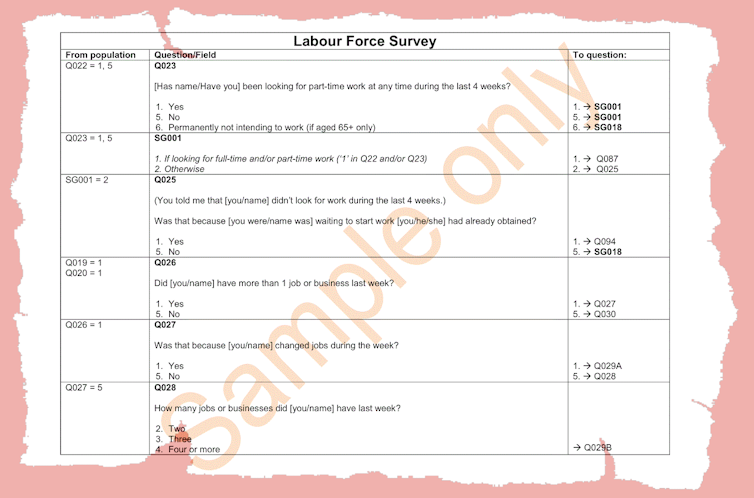Australia's unemployment rate of 4% is good news – and set to get even better by polling day
- Written by Peter Martin, Visiting Fellow, Crawford School of Public Policy, Australian National University

When Labor leader Anthony Albanese couldn’t say whether the unemployment rate was 5% or 4%[1] on Monday, he might have had a point.
It’s 4%[2]. But for a decade – the entire decade leading up to COVID – it never strayed too far from five-point-something per cent.
Melbourne University labour market specialist Jeff Borland[3] points out that in March 2010, Australia’s unemployment rate was 5.4%. Ten years later, before COVID changed things in March 2020, it was 5.3%.
In the years between, it briefly dipped to 4.9% (three times), climbed slowly as the mining boom wound down, edged above 6% in 2014 as the newly-elected Coalition government cut spending[4], and then fell back slowly towards what the Treasury then regarded as the long-term sustainable rate of 5%[5].
For much of Albanese’s time in parliament, from 1996 to now, it has been 5-6%.
And a case can be made that it is 5% right now.
Independent economist Saul Eslake[6] says what he calls the “effective” rate of unemployment is indeed 5%. To the 607,900 officially unemployed Australians in February 2022 (the lowest slice of the population in decades), Eslake adds the historically high:
72,000 people who were counted as employed despite working zero hours, for what the Bureau of Statistics called “economic reasons” including being stood down or because there was insufficient work
59,000 people who were counted as employed despite working zero hours for reasons “other than economic”, including being on leave
The result is an unemployment rate of 5%, which doesn’t count as unemployed the 221,000 employed Australians who worked zero hours due to illness or injury – twice as many as before COVID.
The figures point to something real
But even Eslake’s effective rate of 5% is lower than before COVID.
The massive 26,000-household survey of employment conducted each month by the Bureau of Statistics is pointing to something real.
To get an idea of the scale of the bureau’s survey, compare it to the Essential and Newspoll surveys used to indicate how people are going to vote in the election. Essential surveys 1,000[7] people each time, Newspoll about 1,500[8].
The bureau surveys 26,000 households every month to obtain information on the employment status of about 50,000[9] people aged 15 and over. The scale of the operation is exceeded only by national elections every three years and the census every five years.
Australia’s biggest survey
The survey asks first whether those surveyed worked in the previous week, then whether they were employed but away from work because of holidays, sickness or another reason. Then it asks about hours[10]. Less than one hour (unless it was due to time off) counts as not working.
It is this definition (one hour a week = work) that generates so much of the mistrust[11] of unemployment figures.
The bureau uses one hour per week as the cutoff because it has to use something and because every other comparable country has used it, since 1982[12].







